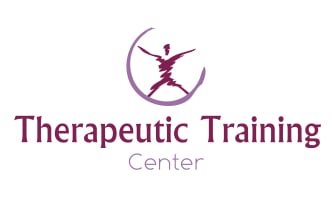Mental Health Benefits of Massage: How it Releases our Stress
If you are feeling tense, stressed, or in pain, a little touch may be what you need. Massage has been used for many years in various cultures to cure, calm, and reduce physical and emotional discomfort by pressing, massaging, and manipulating your skin, muscles, tendons, and ligaments.
Massage is becoming more frequently used in conjunction with regular therapy for various medical ailments and circumstances, including mental health difficulties. Many doctors have acknowledged the importance of massage therapy as a well-being component and have been incorporating it into the hospital environment.
Massage often results in reducing stress. Physical and emotional stress may coexist. Physical stress may arise inside muscles after injury or overuse, generating a buildup of tension and an increase in discomfort. At the same time, mental stress may result from limited mobility, discomfort, or injury.
A hormone called cortisol causes mental stress and may also exacerbate anxiety and depression. Whereas little levels of stress may be beneficial, excessive stress can induce discomfort and self-doubt. Massage therapists relieve stress through different massages to assist people in relaxing, lessen pain, and enhance their mood.
What are the best forms of massage for stress relief?
Deep tissue, Swedish massage, and therapeutic massage are the most often utilized massage treatments to relieve stress.
Stress may be relieved with a deep tissue massage that targets the deepest soft tissue layers. Stress is often produced by building tension inside muscles, which limits mobility and causes discomfort. A deep tissue massage is intended to reduce tension by stretching and distributing muscle fibers and tissues, allowing muscles to relax and soften. Muscle relaxation improves mobility, minimizes discomfort, and reduces stress, helping you have a clear mind and function adequately.
Massage may help relieve stress; the primary goal of this massage is to calm a person physically and emotionally through muscular manipulation. Muscle manipulation helps them to relax and stretch, releasing any stiffness or tension and lowering physical stress. Moreover, tightness and tension create discomfort, raising stress levels psychologically. Thus, Swedish massage reduces mental stress by relieving stiffness and tension.
Also, a therapeutic massage is often used to alleviate tension. A therapeutic massage applies mild pressure to soft tissue regions all over the body; its primary goal is relaxation. When relaxation is inadequate, stress levels rise, resulting in tension, anxiety, and muscle knots. Massage therapy enhances localized blood flow. Endorphins, serotonin, and dopamine are positive hormones found in the bloodstream. Positive hormones promote feelings of well-being, boost relaxation, and decrease stress. Increased blood flow may also enhance tissue flexibility by raising muscle temperature. Increased tissue flexibility relieves stress and prevents the formation of muscle knots. Therefore, stress is reduced by reducing tension and preventing muscle knots.
What massage techniques are used to reduce stress?
Deep strokes, trigger pointing, and lymphatic drainage are stress-reduction treatments most often employed.
Deep strokes are often utilized to relieve tension. It requires applying hard pressure to the muscular tissues. A lot of muscular tension may occur from both deeper and superficial tissues. Deeper stress within muscle tissues might result in higher discomfort and reduced mobility. Deep strokes raise muscle warmth, which improves tissue flexibility, loosens muscles, and decreases stress and tension by increasing tissue suppleness.
Trigger pointing is an efficient stress-reduction strategy. A trigger point is located in the middle of a muscle fiber. Trigger points are muscle knots formed by a buildup of stress and tension. It may produce transferred pain, headaches, and psychological stress. During trigger pointing, fingers and thumbs are utilized to provide forceful pressure. An ischemic response occurs when pressure is applied. When pressure is removed, blood flow is limited to a specific place and rises. The pressure will begin to soften before it is withdrawn, causing a numbing feeling. After the numbing sensation has worn off, additional pressure may be given, depending on how deep or large the trigger point is, or the pressure can be relaxed. Softening and numbing the trigger point improves pain, headaches, and mental and physical stress.
Furthermore, lymphatic drainage may help to alleviate stress. Lymphatic drainage is the stimulation of the lymphatic system in order to eliminate metabolic wastes more effectively. After an accident, surgery, or overuse of a muscle, metabolic wastes may accumulate. Metabolic wastes cause muscle tiredness and weakening, as well as swelling and discomfort. Swelling, muscle fatigue, and muscular weakness may limit mobility and delay the recovery of injuries. Restricting mobility and limiting recovery may increase mental stress because a person may grow irritated at not being able to utilize the part of the body effectively or return to their activity or sport. The lymphatic system is stimulated by massage. A variety of lengthy, deep strokes is utilized for draining metabolic wastes from the body and replenishing them with healthy oxygen and nutrients. Lymphatic drainage removes metabolic wastes from the body more effectively and lowers edema, discomfort, and constriction.
The Online Massage Courses are delighted to educate you on how to offer an excellent massage and always to have pleased customers who return home comfortable; also, for you to have a great massage treatment for your family and friends. Learn different massage courses with us through good teaching materials and videos that will help you have a beautiful career in which you never feel the need to work again.






